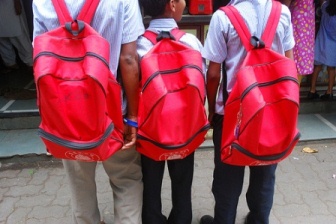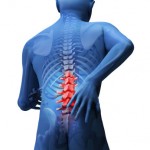Back Injuries From Backpacks
Back injuries from backpacks has become common among children going to school with overloaded school bags. It is the duty of parents to see whether the weight of the bag exceeds 15% of the child’s weight according to this article. Children must learn the proper way to lift the overweight bags, and to wear it in a manner as to distribute the weight equally. Children must be taught to lift the bag with both hands to take the stress on the leg muscles rather than the spinal muscles. Ensure that the size of the pack is suitable for the child so that the child has no discomfort while bearing the weight of the bag. They should learn to use and wear their backpacks properly.
Back Injuries From Backpacks
Injuries caused by schoolbags is a problem for kids.
Here are some important pointers parents must not ignore:
1) Make the right choice
Parents must monitor their children and ensure that they use their bags correctly. “First and foremost, choose the proper size bag for your child. This would be approximately the space between your child’s shoulder blades and waist. A disproportionately large bag will result in carrying too many unnecessary books, toys, and so on, while a too small bag will result in your child carrying too many objects in their hands, thus causing even greater balance and postural problems.”
“A loaded backpack should not exceed 15 percent of your child’s body weight. If a backpack is too heavy, the child will need to lean forward to carry the bag or balance himself. This can cause bad posture and spinal strain.”
Teach your child how to pack his or her bag, rather than simply shove belongings inside without any regard for safety. Guide your child and help make a list of what is needed throughout each day to limit the amount of unnecessary cargo. “Pack the heaviest books nearest your back and the lightest books farthest away from your back. This will help avoid an excessive lean backward and help prevent tipping over. Also of concern are sharp objects such as scissors. These items should be kept in a special place, such as a small box or bag, designed to avoid harm.”
2) Model proper lifting habits
Teach children backpack safety at an early age, many childhood injuries and spinal conditions can be avoided. “Use both hands to lift the bag up. Use the leg muscles to stand up and carry the load. It is important to have your children realize that their leg muscles are infinitely stronger and less prone to injury than the lower back muscles, which most people erroneously use to lift objects. Any quick turning or twisting should also always be avoided when lifting anything.”
3) Wear it properly
The last step to proper backpack safety is wearing the bag in a manner that distributes its weight equally. Primarily, this means always using well-cushioned arm straps—all the time and without exception. While it may be more fashionable for your child to wear the bag hanging off one shoulder, this practice should always be avoided. Using only one strap, even with backpacks that have one strap that runs across the body, causes one shoulder to bear the weight of the bag. By wearing both shoulder straps, the weight of the pack is better distributed, and a symmetrical posture is promoted. A backpack that has padded, contoured shoulder straps will also help reduce pressure on the chest and shoulders.
4) Make sure the backpack fits.
It is important to pay close attention to the way a backpack is positioned on the back, and the size of the backpack should match the size of the child. Shoulder straps should fit comfortably on the shoulder and under the arms, so that the arms can move freely. The bottom of the pack should rest in the contour of the lower back. The pack should “sit” evenly in the middle of the back, not “sag down” toward the buttocks. A backpack with the waist strap option is a better buy, it provides more support to the child.
“I typically do not recommend suitcase-style backpacks that are on rollers. These bags become very cumbersome when anyone has to carry them up flights of stairs, and a child is made to twist and torque the spine to pull the bag along. The only benefit of this type of bag is that on flat surfaces, the wheels cause the weight of the bag to become almost negligent,” says Dr Honl.
5) Be Aware
Simple education and demonstrating the proper way to use and wear backpacks can have a
huge impact on the health and vitality of your school-aged children. Not only is it important to
teach our children the content in the books they carry, but also how to safely transport their
materials between school and home each day. If you suspect that your child may have some underlying condition, such as scoliosis, or his or her posture has been getting progressively worse, first look to your child’s backpack-wearing habits. The next step should be a visit to your chiropractor for a full evaluation. Early intervention and proper care can save a young child a lifetime of pain, discomfort, lack of self-esteem, and ill health.
Parents are advised to teach their child how to carry their backpacks correctly, and the ways of handling it to avoid back pain in the later stages of life. Attention should be given to the size of the backpack, materials that are carried, and the proper ways of wearing and lifting it to avoid back injuries from backpacks. Whether your child will listen might be another issue.
This video is from Marisa Mendez, CHOR Rehabilitation Services. It describes how to properly wear a back pack to limit back strain.
Over the years, textbooks have gotten bigger and heavier, resulting in heavier backpacks that cause back problems. By Chetan Patel, Spine Surgeon – Florida Hospital.
You might also like:
Tags: back injuries from backpacks















